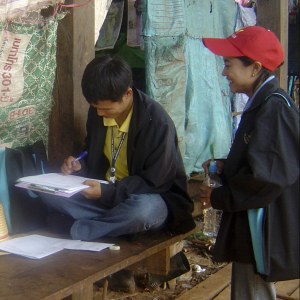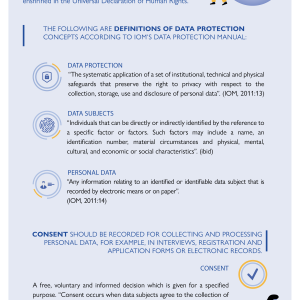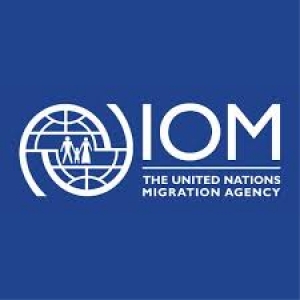The three main sources for data on international migration are population censuses, administrative data (including continuous population registers) and household surveys. The limitations of population censuses and administrative data have been documented (Bilsborrow 1997). Household surveys hold certain advantages over censuses and administrative data sources because of their flexibility to collect more detailed data, making them an ideal data source to assess more complex migration issues, such as why people migrate and the consequences of migration, among others. They provide a flexible mechanism for potentially collecting detailed data on:
- Members of households, including persons who immigrated from abroad, who migrated abroad and returned (return migrants), and who emigrated from the household to live in another country;
- Household characteristics, including housing quality/living conditions, aspirations, household income/expenditures, ownership of land, dwelling and other assets;
- The event of migration, including the time of arriving/leaving, the origin/destination country, antecedents to migration, perceived reasons for moving, the process and financing of the move, the receipt of remittances from migrants by the household, etc.; and
- The situation of the migrant at both the time of migration and the current time, which is needed for investigating the determinants and consequences of migration.
Compared to censuses, a household survey can collect higher quality data because it typically involves recruitment of more qualified interviewers as well as training them for longer periods, such as a week or two compared to a day or two.
Adapting existing household surveys for collecting migration data
To harness the potential of existing, ongoing household surveys to collect migration data, several questions, if not larger migration modules, could be added. These questions or modules could cover immigrants, emigrants, return migrants, forced migrants (refugees and asylum seekers), potential migration or remittances. In principle, there could be a core module for all countries plus optional questions or modules to add according to country needs and interests.
Adding modules to existing surveys evidently has a huge advantage in terms of cost, as it involves only the relatively small marginal cost of adding questions to an ongoing survey program already funded. This implies some small increase in: the length of the questionnaire (a bit more paper, and/or time to program the questionnaire in a tablet); the time for interviewer training; the interviewing time; and in time to enter, clean, analyze, publish and interpret the additional data. Summing all these gives the total marginal cost of adding questions, which seems unlikely to exceed 5 per cent of the total survey cost.
Which household surveys can be adapted?
There are several types of household surveys commonly administered in countries around the world that can be considered potential candidates for adding questions on international migration, with sample sizes of 5,000-30,000 households:
- National labour force surveys (LFS)— Among household surveys, LHS are the most common as they are carried out in around 120 countries;
- Demographic and Health Surveys (DHS)— Over 90 developing countries have undertaken DHS since the program began in 1983;
- Multiple Indicator Cluster Surveys (MICS)—Around 60 countries have conducted MICS since the mid-1990s; and
- Living Standard Measurement Surveys (LSMS)—The World Bank has developed and supervised LSMS in over 40 countries since the early 1980s.
LFSs appear a priori to be the best candidates for adding questions to collect migration data because they are the most common. In addition, they are nationally representative, implemented by the government, cover a topic integral to much migration (employment), and tend to have larger sample sizes. Besides detailed data on the current main economic activity, employment/unemployment, occupation, economic sector of work, earnings, etc., they also have a household roster covering all current members (as do most household surveys), and obtain place/country of birth.
The vast majority of LFS, DHS and MICS surveys currently collect no data on migration beyond place of birth, which only identifies what is referred to as lifetime migrants, since we only know that they moved at some time in their life from the country of birth to the country of current residence. LSMS surveys, in contrast, collect some basic additional data primarily on internal migration, on the last change of residence. Only a few DHS surveys (including Colombia and Ecuador around 2005) and a few LSMS surveys (including Albania and Tajikistan) have collected any data on international migration (beyond place of birth), with only the latter two obtaining more than a census can realistically collect, that is, beyond country of birth, citizenship, and previous place/country of residence say five years ago, which identifies fixed period immigrants, and whether any member of the household left to live abroad, to identify emigrants from households. Data on fixed period migrants is generally much more useful than that on lifetime migrants since it both fixes in time the migration and obtains it for a very recent time (to the date of data collection).
Many countries also undertake other types of national household surveys of potential interest, including nutrition surveys and household budget (in most of the CIS countries) and income-consumption surveys. Reviews of the content of most of these surveys up to around 2010 (e.g., Bilsborrow and Lomaia, 2011, 2012, on CIS countries) found none collecting more than a trivial amount of relevant data (viz., value of monetary remittances received). A few developing countries such as Brazil also have large annual multi-purpose surveys (Pesquisa Nacional por Amostra de Domicilio, since 1967, reaching 151,000 households in 2015), which up to now still appear to contain no more than the basic census-type questions on migration.
Is it worth adapting existing household surveys?
To answer whether adding questions and/or modules on international migration to existing household surveys, at least four questions need be asked:
- What is the sample size, the geographic coverage, and the prevalence of migrants of interest in the country? The first and third together determine the likely number of migrants and their households to be found in the usual random selection of households used in surveys to represent the population. Will the survey produce data on enough migrants to justify the cost?
- What is the focus of the existing survey on which questions might be added? This determines the availability of other data useful in the study of migration already being collected, such as the main demographic characteristics of people including immigrants (age, sex, education, marital status, etc.), economic activity such as work status, occupation, earnings), household living conditions, etc. This makes labor force or other economic surveys more useful than those focusing on fertility, health, nutrition, political issues, etc.
- Are any relevant data already being collected in the survey questionnaire on international migrants? This increases the possibility of convincing the survey stakeholders to accept additional questions, and a likely locus in the questionnaire to insert them.
- Are any retrospective data already being collected on individuals/the household? To study the determinants or consequences of migration data are needed on the situation of migrants and their household at or just prior to the time of immigration/emigration?
Going beyond existing household surveys
After answering the questions above, some countries may decide that adapting an existing household survey is worth it; others won’t, including countries that want to collect more detailed data, for example, on the determinants and/or consequences of migration.
The two main serious shortcomings in adapting existing surveys to provide data useful for measuring, monitoring or analyzing international migration tend to be (1) and (4). Thus while adapting household surveys can improve the collection of basic migration data, to go beyond this to study migration’s complexity, household surveys focusing on migration can yield larger sample size of migrants and more detailed data. Several regional projects, to be featured in Part 2 of this blog, have already demonstrated how specialized surveys are becoming the new frontier in data collection.








